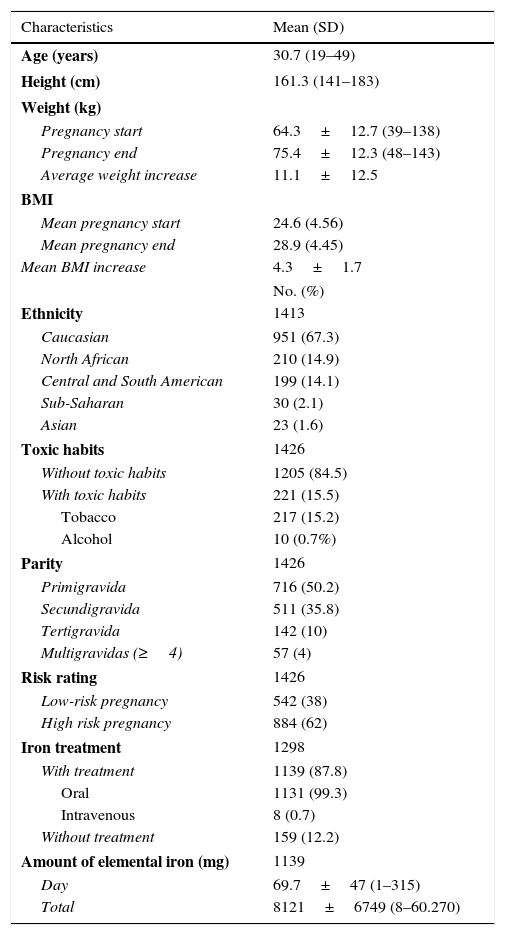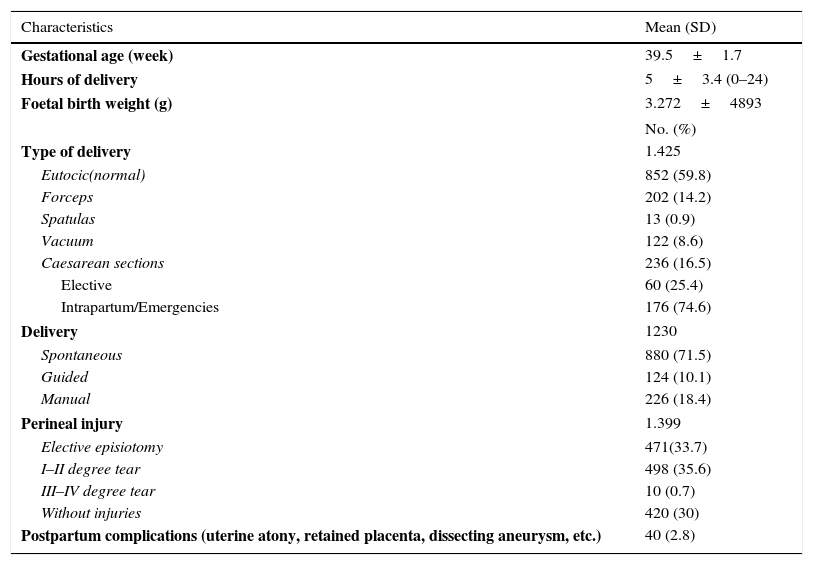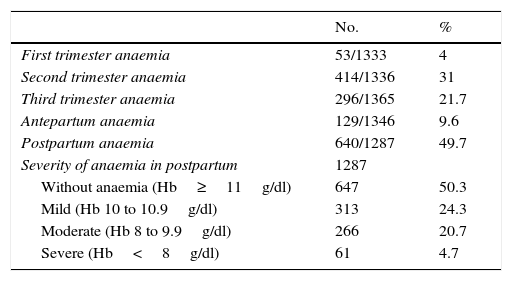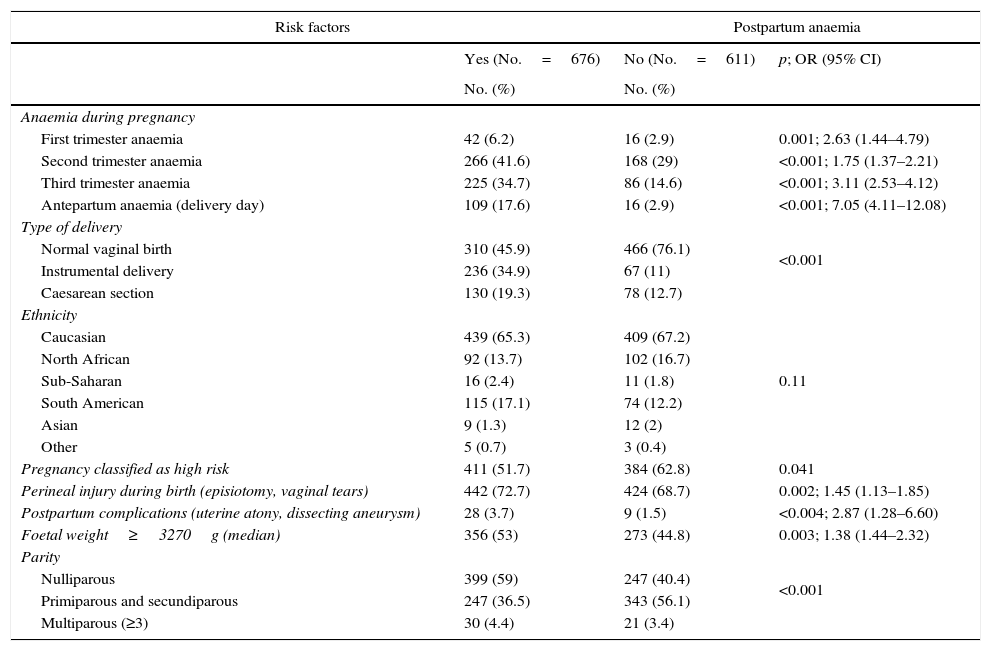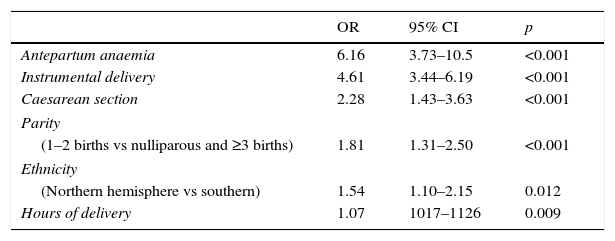The objective of the study was to assess the prevalence of anaemia in the immediate postpartum period (48–72h), determine the risk factors and the value of haemoglobin before birth to reduce postpartum anaemia.
Material and methodsA prospective, observational and longitudinal study that included 1426 women who delivered consecutively and agreed to participate in the study. Different variables, analytical, epidemiological, foetal and maternal symptoms were studied.
ResultsThe prevalence of anaemia in the postpartum period was 49.7%. The most important risk factors were antepartum anaemia and type of delivery. The types of delivery most influencing postpartum anaemia were, forceps (82.3%), the ventouse 67%, caesarean section (58.2%) and vaginal delivery (37.2%). In the multivariate study was found as the most important independent risk factors, the haemoglobin in the delivery day (OR 6.16, CI: 3.73–10.15) and instrumental delivery (OR: 4.61, CI: 3.44–6.19). Other independent risk factors were haemoglobin in the third trimester, episiotomy and perineal tears, ethnicity, birth weight, parity and intra/postpartum complications.
ConclusionsAnaemia in the immediate postpartum is a prevalent problem. The factors most associated postpartum anaemia were antepartum anaemia and instrumental delivery. If patients arrive at the day of delivery with haemoglobins ≥12.6g/dl and were restricted to necessary instrumented deliveries and caesarean sections, episiotomies and we could avoid perineal tears we can decrease anaemia in the immediate postpartum period very significantly.
El objetivo del estudio fue evaluar la prevalencia de la anemia en el posparto inmediato (48-72h), determinar los factores de riesgo y el valor óptimo de la hemoglobina antes del parto para reducir la anemia.
Material y métodosEstudio prospectivo, observacional y longitudinal que incluyó a 1.426 mujeres de forma consecutiva que accedieron a participar en el estudio. Se estudiaron diferentes variables, analíticas, epidemiológicas y clínicas tanto fetales como maternas.
ResultadosLa prevalencia de anemia en el posparto inmediato fue del 49,7%. Los factores de riesgo más importantes fueron la anemia preparto y el tipo de parto. Con el fórceps hubo un 82,3% de anemia posparto, con el vacuum un 67%, con la cesárea un 58,2% y con el parto eutócico un 37,2%. En el estudio multivariado se encontraron como factores de riesgo independientes más importantes: la hemoglobina el día del parto (OR: 6,16; IC: 3,73-10,15) y el parto instrumentado (OR: 4,61; IC: 3,44-6,19). Otros factores de riesgo independientes fueron la hemoglobina del tercer trimestre, la episiotomía y los desgarros perineales, la etnia, el peso del neonato, la paridad y las complicaciones intra- y/o posparto.
ConclusionesLa anemia en el posparto es un problema frecuente. Los factores que más se asociaron fueron el parto instrumentado y la anemia preparto. Si las pacientes llegaran al día del parto con hemoglobina≥12,6g/dl y optimizáramos la tasa de partos instrumentados y cesáreas, restringiendo las episiotomías sin aumentar los desgarros perineales de alto grado podríamos conseguir una disminución muy significativa de la anemia en el posparto inmediato.






